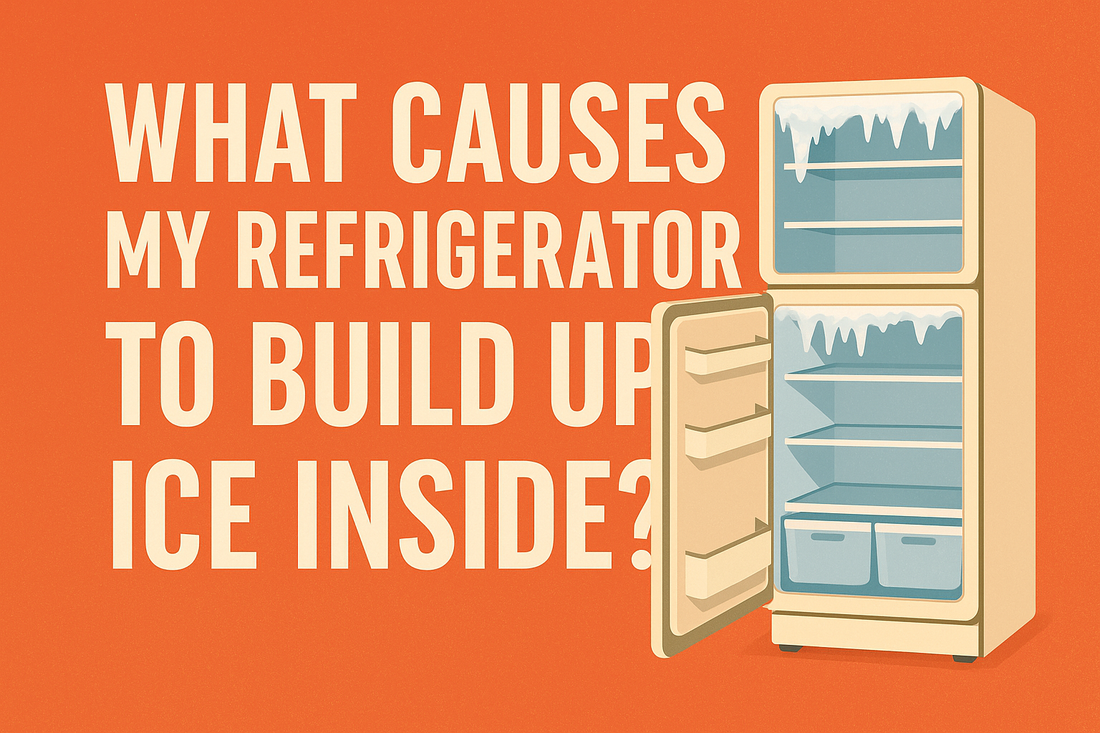
What Causes My Refrigerator to Build Up Ice Inside? Solutions and Reasons
Share
PRS Parts Inc.
If you’ve opened your refrigerator only to find a wall of ice building up in the back or along the walls, you’re not alone. Ice buildup inside a refrigerator can lead to poor performance, temperature fluctuations, spoiled food, and even damage to internal parts. Fortunately, understanding the root causes can help you solve the problem quickly—and prevent it from happening again.
❄️ Common Reasons for Ice Buildup Inside Your Refrigerator
1. Damaged or Worn Door Gasket
A cracked, loose, or brittle door gasket allows warm, humid air to seep into your refrigerator. When that warm air meets the cooler internal temperature, condensation forms and freezes—often leading to excessive ice buildup near the door seals or along the inner back wall.
Solution:
Inspect the gasket for cracks or gaps. If it’s damaged or doesn’t create a tight seal, replace it with an OEM replacement gasket available at PRS Parts Inc.
2. Clogged or Frozen Defrost Drain
Most frost-free refrigerators have a defrost system that melts built-up ice during normal cycles. If the defrost drain is clogged or frozen, that meltwater has nowhere to go—and it refreezes inside your fridge.
Solution:
Flush the drain line with hot water to remove clogs. If the issue persists, a defrost drain heater or complete drain line replacement may be needed.
3. Defrost System Failure
If your defrost timer, heater, or thermostat fails, your refrigerator may not defrost as intended. Over time, this leads to a thick layer of frost along the evaporator coils or back wall of the unit.
Solution:
Test the defrost system components. If you find a faulty heater, timer, or thermostat, PRS Parts Inc. stocks OEM defrost parts for major brands like Whirlpool, Frigidaire, GE, and more.
4. Frequent Door Openings or Overloading
Opening your refrigerator too frequently or leaving the door open for extended periods allows moist air in, which leads to condensation and eventual icing.
Solution:
Be mindful of how often and how long the door stays open. Avoid overpacking your fridge, which restricts airflow and can contribute to uneven temperatures and frost spots.
5. Improper Temperature Settings
If your fridge or freezer is set too cold, moisture inside the unit will freeze rapidly. This might show up as ice forming on walls, shelves, or stored items.
Solution:
Adjust the fridge temperature to 37–40°F and freezer to around 0°F. Use a thermometer to verify accuracy if needed.
🔧 Keep Ice Where It Belongs
If you’re unsure which part is failing, PRS Parts Inc. has certified technicians who can help diagnose the problem and provide the right OEM replacement part. And if fixing it yourself isn’t ideal, we can refer you to our local repair team or recommend a new unit.
Visit PRS Parts Inc. at 540 Lagoon Dr. for authentic appliance replacement parts and expert repair assistance. Let us help you keep your refrigerator running ice-free and efficient! Service with the Spirit of Aloha.
